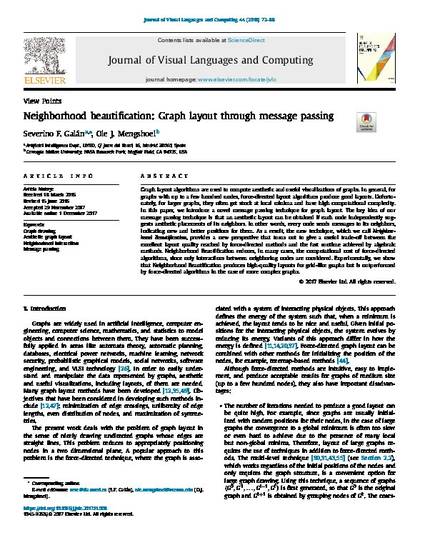
Article
Neighborhood beautification Graph layout through message passing
Journal of Visual Languages and Computing
(2018)
Abstract
Graph layout algorithms are used to compute aesthetic and useful visualizations of graphs. In general, for graphs with up to a few hundred nodes, force-directed layout algorithms produce good layouts. Unfortunately, for larger graphs, they often get stuck at local minima and have high computational complexity. In this paper, we introduce a novel message passing technique for graph layout. The key idea of our message passing technique is that an aesthetic layout can be obtained if each node independently suggests aesthetic placements of its neighbors. In other words, every node sends messages to its neighbors, indicating new and better positions for them. As a result, the new technique, which we call Neighborhood Beautification, provides a new perspective that turns out to give a useful trade-off between the excellent layout quality reached by force-directed methods and the fast runtime achieved by algebraic methods. Neighborhood Beautification reduces, in many cases, the computational cost of force-directed algorithms, since only interactions between neighboring nodes are considered. Experimentally, we show that Neighborhood Beautification produces high-quality layouts for grid-like graphs but is outperformed by force-directed algorithms in the case of more complex graphs.
Keywords
- Graph drawing,
- Aesthetic graph layout,
- Neighborhood interaction,
- Message passing
Disciplines
Publication Date
February 1, 2018
DOI
https://doi.org/10.1016/j.jvlc.2017.11.008
Citation Information
Severino F. Galan and Ole J Mengshoel. "Neighborhood beautification Graph layout through message passing" Journal of Visual Languages and Computing Vol. 44 (2018) p. 72 - 88 Available at: http://works.bepress.com/ole_mengshoel/72/
